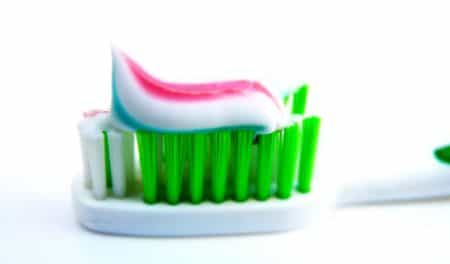Surely you too have gone to buy toothpaste at the supermarket or pharmacy and found yourself with a wide range of products, but which one to choose? Often the choice falls on advertised products or a selection based on cost is made because from a health point of view all toothpastes promise to "fight tooth decay", "eliminate plaque", and much more. According to a study carried out by the Cochrane Oral Health Group of the University of Manchester and published in the Daily Mail , the "right" toothpaste would be the one with the highest concentration of fluoride . Here it becomes essential to read the label with the content. In fact, a low fluoride concentration, and by "low" meaning less than 1,000 parts per million, the toothpaste's effect in preventing cavities is equivalent to that of a fluoride-free toothpaste. Conversely, toothpastes with a high concentration of fluoride would be able to reduce the formation of caries by 24%. Generally the products on sale have a concentration ranging from 100 parts per million up to a maximum of 1,400. These conclusions were reached after a review of 79 studies worldwide involving more than 73,000 children. And it is precisely the little ones who need to pay the most attention: in the article it is recommended to avoid toothpastes with high amounts of fluoride in children under the age of six to avoid fluorosis in case of ingestion of significant quantities during washing of the teeth.
You may also like
Plaque detector
Scientists at the University of Liverpool have developed a new dental product to identify plaque before it is visible to the human eye alone. The device is the size of a toothbrush and emits light that must be viewed with special yellow glasses with a red filter. In doing so, the plaque – if present… Continua a leggere Plaque detector
Dental Implants: Methods, Treatments and focusing on younger patients
Dental implants have revolutionized dental care, offering a potent solution for tooth loss. This article delves into the methods and treatments available, focusing on younger patients, under 55, while exploring new research studies that could redefine dental implantology.
Dental Aligners: Treatment Options for Adults
Dental aligners have revolutionized orthodontics, offering adults a discreet solution to teeth misalignment. This article explores various methods and treatments available, challenges faced by adults, and emerging studies in experimental aligners. Additionally, it delves into regional trends and geographic incidence of treatments.
Dental Implants: Modern Techniques and Emerging Research
Dental implants have revolutionized the field of dentistry, providing patients with robust solutions for replacing missing teeth. This article delves into various methods and treatments available for dental implants, particularly focusing on challenges faced by individuals under the age of 55. Additionally, it explores cutting-edge research and new developments in implant technology, including experimental studies. The piece also examines the geographical distribution and incidence of dental implant procedures globally.
Dental Implants: Transforming Smiles Across Generations
Dental implants have revolutionized the way we approach oral health restoration, offering renewed hope to those suffering from tooth loss. This comprehensive article delves into the methodologies and treatments available, particularly focusing on challenges faced by individuals over 55 years. It also explores cutting-edge research and the geographical incidence of implant procedures globally.
